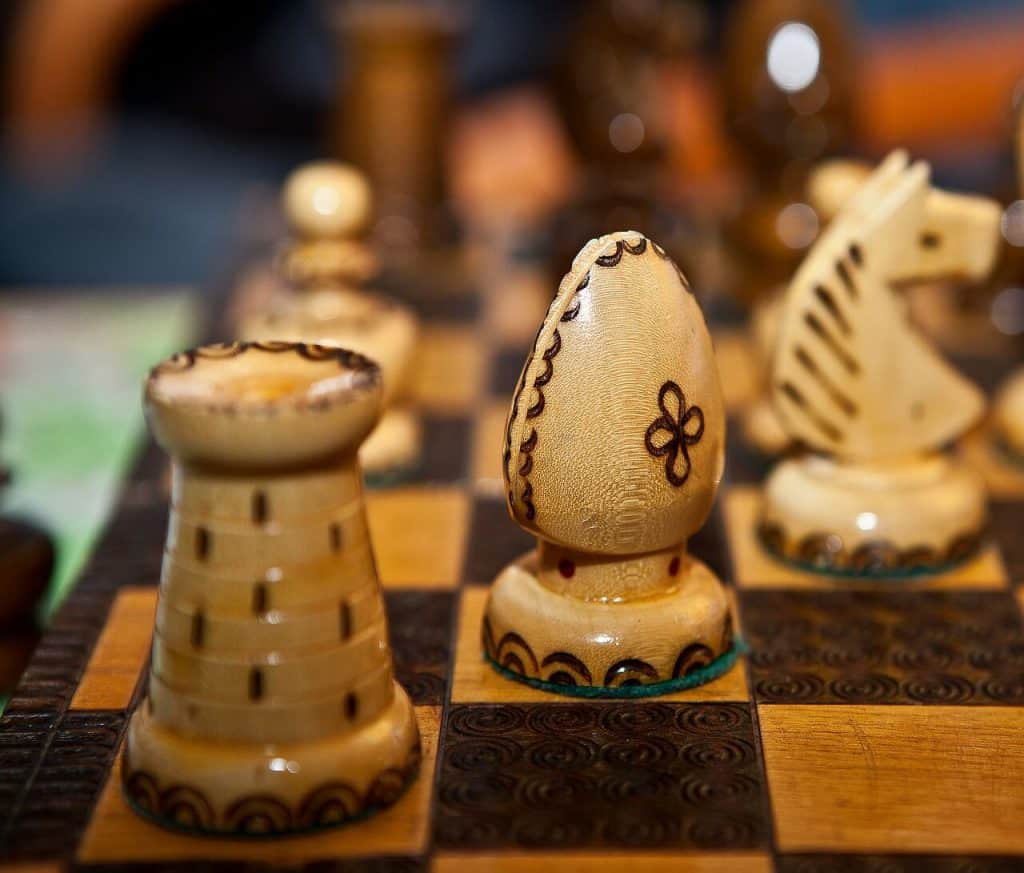Table of Contents
The importance of the bishop
Knowing how to seize the art of the chess bishop coordination is key to getting crushing attacking positions.
The bishop is a minor piece in chess, differently from the knights, bishops cover a lot of squares simultaneously. They don't need to be in the center to be effective, a bishop controls a bunch of squares, even if it's in the corner.
This piece tends to be dangerous for both players, a well-positioned bishop causes so much trouble because is an excellent attacker. There are chess openings and ideas dedicated exclusively to counter bishop activity or look for a way to exchange bishops.
Everyone that has played chess for some time has heard about the “bad” or “good” bishops the truth is the value of the pieces is relative. The only thing that defines the worthiness of a chess bishop is its activity.
Piece activity in chess could be the most important thing in the chess game, other factors in the position become irrelevant once you take the initiative.
Prioritizing the activity of your bishops will lead you to win games. I'm not saying that you should worry only about your chess bishop activity but your chess pieces coordination in general.
What I'm saying is the bishops are likely to create tactics and attacking chances easily when least expected, for example, the Greek gift with Axh7+!
1. Axh7!! Kxh7 2.Ng5+ Black is lost.
The bishop in the valley
The bishops show off all their potential normally when the position is open. I'd like to screw this idea of chess bishop activity in your mind with a funny little joke “The bishop in the valley”
When the bishops are in the valley they are on free ground, similar to other pieces in chess bishops love freedom!
They love it when they can go around with no restrictions or obstacles so they don't move, instead, they flow through the position.
In these cases, they become particularly strong, therefore, look for ways to create this valley opening the position with pawn breaks.
It's curious to think that the bishops and knights have the same value in chess (three pawns) as a minor piece. But even so, the pair of bishops is considered an advantage over “the pair of knights”
Chess bishop defense
Bishops are better for the attack however it doesn't mean they're bad at defending. Bishops can be hard defenders when they're disposed to protect the king.
The fianchetto is known for being a quite difficult structure to attack. The reason is the bishop, which protects the h8, g7, f6, and h6 squares (if playing with black pieces). When you bring the f6 knight into the mix you end up rising a chess bishop and knight fortress.
The Dragon variation of the Sicilian Defense is a good example of this. Most of the time white will have to sacrifice material if dreaming with serious attacking chances, this proves how effective this structure is.
Creating the chess bishop tactics
This is an important question that probably every chess player has. One of the first steps of beginners in chess is solving tactics, you learn how to checkmate but in a pre-set position.
How do we obtain these beautiful mate in two moves positions?
You have to set your pieces harmoniously and effectively to create threats by choosing the best way to develop your forces. This is known as improving your pieces.
This is the key to cultivate and grow our bold attacks and skillful chess bishops, knights, rooks, queen attacks.
It's not about developing your pieces fast with unclear goals, you have to know the plan and play according to that plan so you can achieve it.
First set the goals in your mind according to the position you have, then, you have to look for ways to get your pieces more active.
Talk to your pieces
Probably all of this sounded great in your mind but you're still confused and don't know how to apply it to your games. That's why I advise you to talk to your pieces.

Listen to the wooden pieces and understand the feelings of them, know their dreams, goals, and ambitions. Maybe the knight is not too happy at the side of the board, ask him!
The key to the chess bishop killer strategy is to keep the bishops happy by making them active and free.
Pieces are happy when they feel they are contributing and in aggressive or defensive positions being useful. You have to know knights are happy when they're in the center of the board because they're strong.
When the soldiers are motivated there is no war they can't win.
The great diagonal
We call great diagonals the group of squares going from a1 to h8 and h1 to a8. These are the longest diagonals of the chessboard and usually have a lot of potentials.
There are different openings related to control the great diagonal with the bishop, which usually ends up being the best piece.
The activity of the bishop in this position is insane, and difficult to counter, if the player controlling the great diagonal opens the game is likely to gain the advantage.
The chess bishop and queen killer combination
This is the best way to put pressure against your opponent castling, using the bishop and queen “cannon”. The queen and bishop line up to cause trouble in the enemy position.
This is a simple pattern yet incredibly effective to force your opponent to defend so you gain the initiative. This pressure can be enough to make this chess bishop strategy a success.
What we could say about the diagram above is that 80% of white's advantage is in the bishop. If black were to exchange his passive white squared bishop with white he would be in a more comfortable position.
One of the most terrifying things a chess player can see, a bishop and queen aiming straight to his king.
Also interesting:
Chess strategy tips for beginners — Play better chess!
Top 10 aggressive chess openings for black and whites
GM Norms in Chess – How to Produce Those to Titles
[yasr_overall_rating]






